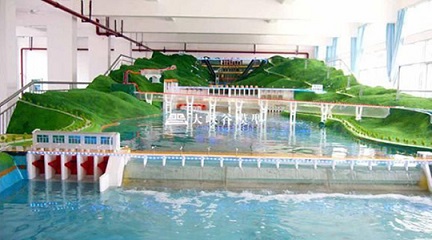
当前课程知识点:Socially-Responsible Real Estate Development: Learning to Use Impact Assessment Tools Effectively > Module 3: Social Impact Assessment > Lectures > Lecture 2
与EIA一样 SIA也需要处理
在预测及分析过程中的
比例 权重 及置信级别
而SIA的难度会更大
因为要在社区凝聚力的子维度
以及不同开发选项对此产生什么影响方面达成一致
将是一场争议性很大的对话
社会科学家可以给你最好的建议
但在应用社会学领域
对于具体使用哪些指标
如何确定规模
有子部件时 如何衡量其权重等
尚未达成完全一致
我还认为
相对于EIA专家
在表达预期目标时的自信
SIA专家在陈述自己的衡量结果时
置信水平较低
我认为 SIA不应该被当作
一种决定性的 明确
科学 系统的报告
而应视作参与讨论的过程
如果大型房地产项目出现了多种方案
社会影响包括增加就业机会或收入
这都是我们所关心的话题
那么我们就没有必要
在特定社区内为了预测收入的种类
而展开大型辩论了
换句话说 在不同项目的收益方面
可以存在各种分散式效果
我们可以努力
针对项目对该地区底层人群或
中等收入人群产生的影响建模
我觉得这才是至关重要的
我们永远不可能在所有利益相关方群体之间
达成完全一致
各利益相关方会发现
技术顾问可以提供思路
但是却无法肯定地说
具体应该使用哪种类别
这一点我觉得并非那么重要
你可以简单地说高等 中等或低等 然后找出解决方法
或者说 对三个工作领域的人群
三个收入水平的人群
或者三个年龄层次的人群有什么样的影响
看不到这些问题
后期会给项目带来各种负面影响
看到这些问题而没有达成一致是可以接受的
但有一个前提
就是针对开发商 开发商顾问 及利益相关方
提出来的最佳建议及最好信息
展开了讨论
很难断定 哪些类别的人群
会在就业 收入 及社交方面受影响
所以这个选项就比那个选项
强上三倍
事情不是这样的
但有可能说 项目第三方案
将对最贫困人群的就业
及住房成本
产生更为恶劣的影响
让他们的家庭生活更加糟糕
我认为我们的方向应该是针对这些问题
在实际预测这样的社会影响时
只有几种预测模型
被广泛接受
社会科学家可以把所有信息综合在一起
据此进行大致推断
根据现有资料
找到适合某个特定情形的方案
从不同社会影响着手
将不同开发选项的成本与收益
集中在一起
这很困难 因为预测的时候
总是伴随着不确定性
置信水平可能非常低
我真的认为 不管是什么结果
都应该与利益相关方分享
使之透明化
随之进行讨论
或者按通常的形式进行协商
如果一个拟开发项目
可能会让长期住在某处的人群
搬离这里
这就是更加重要的社会影响
需要我们好好考虑
这时问题就变成 他们要搬到哪儿去
如果他们是被迫离开的话
他们又如何能一起搬走
齐心重建社区
或者说 通过什么样的方式
才能保证在新项目范围内
有一些空间是他们可以控制的
是会按照他们社区的
价值观或利益
来设计的
这才是次群体代表
开发商 以及监管部门之间
为了减轻负面影响
改善生活质量
而应该商讨的问题
所以我总是强调
仅仅关注最低限度的分析是不够的
我们要通过SIA
为那些受到一定程度负面影响的人群
探讨问题的解决之道
提升他们的生活质量
正如我前面说过的
融合不同的社会影响规模
找出不同的选项
没必要对选项进行排名
重要的是 促进谈话
虽然在大多数国家的
SIA及EIA相关法律中
都没有明确说明
但监管部门必须保证SIA符合所有法律规定
并担负起
促成此类谈话或协商的责任
可能这些谈话或协商
超过了监管部门的职责范围
但它们可能正是开发商感兴趣的
这样一来 这个项目
就会得到社区各方人士的支持
所以 在我看来
就算SIA不像EIA那样发展充分
就算SIA专家的预测方法不够完善
但在为大型房地产开发项目
赢取公众支持方面
SIA可能更胜一筹
并且我认为 如果公众支持
是按照我所描述的方式产生
那么它就能够解释
房地产开发的社会责任是什么
-Welcome
--Welcome
-Course Welcome
--Welcome
-Entrance Survey
-Entrance Survey
-Learning Objectives
-Course Schedule
-Meet Your Course Instructors
-Grading and Completion Criteria
--html
-Introduction
-Lectures
--html
-Readings
--Social Impact Assessment: The State of the Art
--Social Impact Assessment and Public Participation in China
-Developer Interview
--Module 1
--html
-Questions
-Assignment
--html
--html
--Peer Assessment
-Debrief
--Discuss
-Introduction
-Lectures
-Readings
--Methods of Environmental Impact Assessment
--Public Participation and Environmental Dispute Resolution
--Environmental Impact Assessment for Developing Countries in Asia
--Importance of Nonobjective Judgements
--Example Environmental Impact Statement
-Developer Interview
--html
--Module 2
--html
-Questions
-Assignment
--html
--Peer Assessment
-Debrief
--Discuss
-Introduction
--Text
-Lectures
--html
-Readings
--Introduction to Social Impact Assessment
--Effectiveness in Social Impact Assessment
--Example Social Impact Statement
-Developer Interview
--Video
--Text
-Questions
-Assignment
-Debrief
--Discuss
-Introduction
--Text
-Forest City Case Study
--Part 1
--Part 2
--Part 3
--Additional Forest City Information
-Lectures
-Readings
--Dealing with An Angry Public
--Facility Siting and Public Opposition
-Developer Interview
--Module 4
--Text
-Questions
-Assignment
--html
--SCENARIO
-Debrief
--Discuss
-Introduction
-Lectures
-Readings
--Why Would Corporations Behave in Socially Responsible Ways?
--Social Impact Assessments of Large Dams Throughout the World
--Environmental Sustainability Principles for the Real Estate Industry
-Developer Interview
--Module 5
-Questions
-Assignment
--html
--SCENARIO
-Debrief
-Further Resources
-Thank You
--Thank you for taking the course
-Acknowledgements


